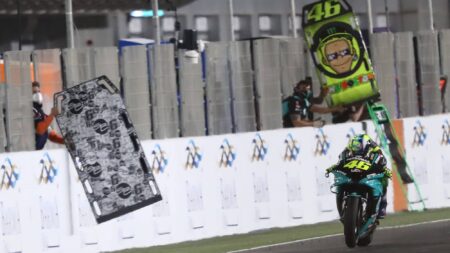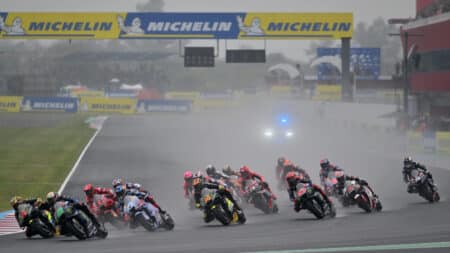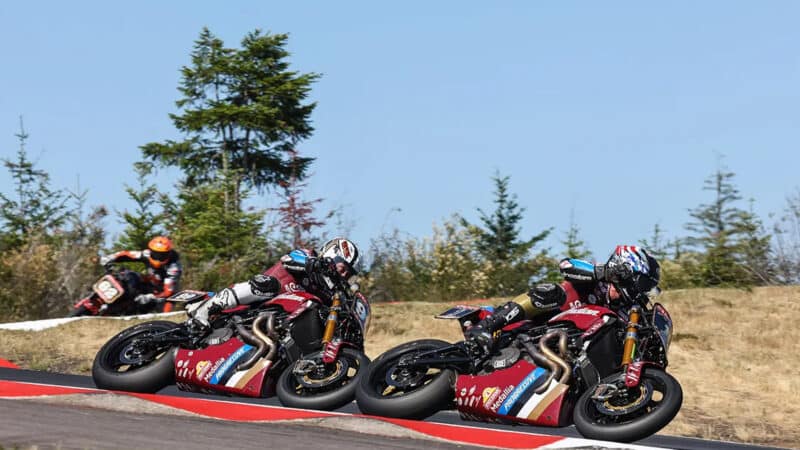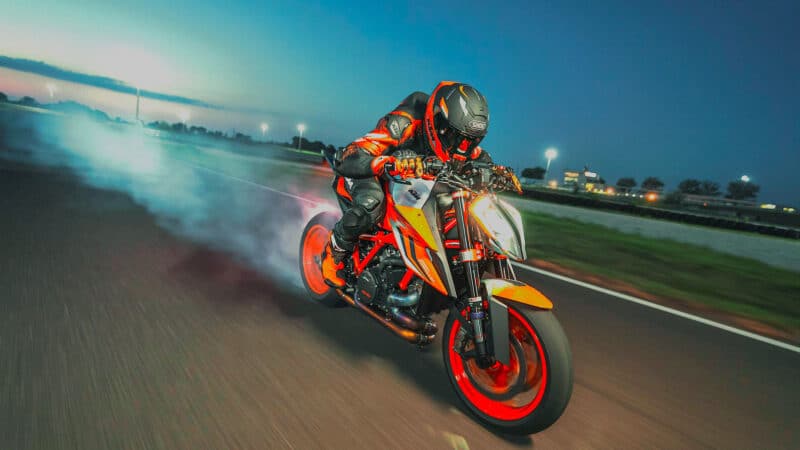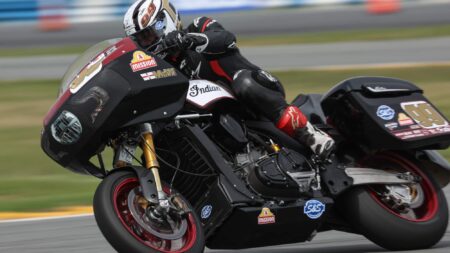In 2014 MotoGP fuel tanks were reduced to 20 litres, down from 24 litres in 2002, the inaugural four-stroke MotoGP season. This was supposed to reduce performance and force the manufacturers to work harder at developing lean-burn engines.
Both perfectly reasonable ideas but in fact a great way of making the racing more dangerous. When engineers need to save fuel, where do they try to save it? During full-throttle acceleration? Of course not. No, they try to save vital drops of fuel on the overrun.
The problem here is that if the engine doesn’t burn fuel consistently at low rpm on a closed throttle it may die, lock the rear wheel and trigger a disastrous corner-entry highside. There were many such crashes during the 20-litre era. (Current fuel capacity is 22 litres.)
So the MSMA and Dorna must consider other ways of slowing the bikes, perhaps reducing the width of the tyres or reducing the number of gears. All other ideas gratefully received.
They will also need to reduce downforce aerodynamics and ride-height devices, through this will require change from the very top, from the Grand Prix Commission and the Grand Prix Permanent Bureau, who must somehow do away with the MSMA’s unanimous voting system, which allows one manufacturer to overcome the wishes of all the others, which is a daft way to run anything.
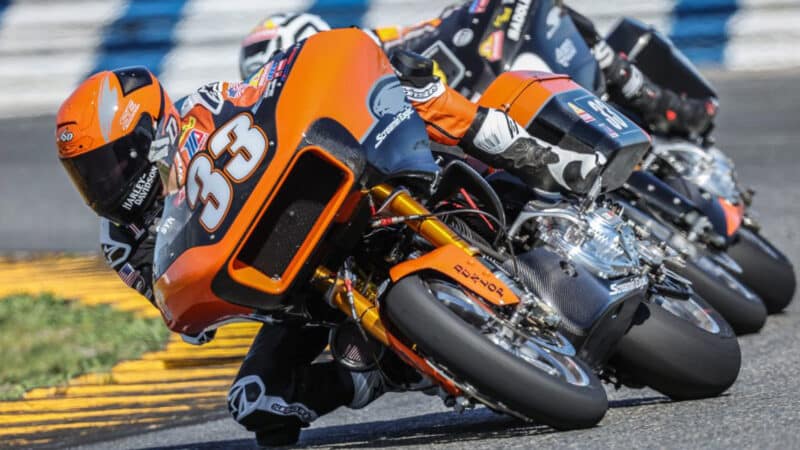
Harley King of the Baggers ace Kyle Wyman – baggers are so popular in the USA that that they’ll soon be racing in Europe, via BSB
MotoAmerica/Brian J Nelson
But whatever they do will squeeze the MSMA and Dorna between a rock and a hard place.
“If we make MotoGP bikes a second or two slower they will be slower than World Superbike machines,” Dorna management tell me.
This would obviously be ridiculous, like touring cars out-performing Formula 1 cars, which would make premier-class prototype racing redundant. Therefore it can’t be allowed to happen.
So far this year MotoGP and WSB have both raced at only one track — Assen — where the fastest MotoGP lap was 1min 33.065sec and the best WSB lap was 1min 34.133sec. That is not a big difference and among other things underlines the insanely high performance of the latest road-legal superbikes.
My experiment suggests the supersport market is basically extinct.
So what to do?
There is 100% no doubt that MotoGP performance must be reduced, which means that superbike performance must also be reduced.
There’s already talk of reducing the WSB cost cap, which demands that production versions of all WSB bikes must cost no more than 45,000 Euros, which just happens to be a few Euros more than the cost of a Ducati Panigale V4R.
There’s also talk of running WSB under lower-spec Superstock rules.
But how about getting more radical than that?


